Temperature is one of the most essential factors in determining how well the trout will be biting. Understanding how different temperature ranges affect the fish, from high to low, will help you step up your game.
The best water temperature for trout fishing (without considering species or location), is between 45F and 67F. Ideally, anglers should look for water between 55-60 F for the absolute best trout fishing times, but this greatly depends on species and how they’ve adapted to the local climate.
Below are more details about how temperatures affect trout fishing, including by species and some other factors related to the temperature that will help you understand how the fish feed and behave.
23 Tips About The Best Temperature When Trout Fishing
Temperature can affect trout significantly, but the water temperature is much more important than the air temperature.
Bringing a thermometer will let you measure the temperature and better understand how the fish behave, rather than guessing based on the temperature outside the water.
1. Trout Are Most Active Between 44 And 67 Degrees Fahrenheit
Trout are known to be most active and exhibit optimal feeding behavior within a temperature range of 44 to 67 degrees Fahrenheit (7 to 19 degrees Celsius).
In this temperature range, trout are actively hunting and responding to lures and baits most favorably.
Of course, this range is a rough estimate as trout, acclimated to consistently higher temperatures and other species might be active in higher or lower temperatures.
However, somewhere in the 50-60s will almost always result in good fishing and is a great starting point.
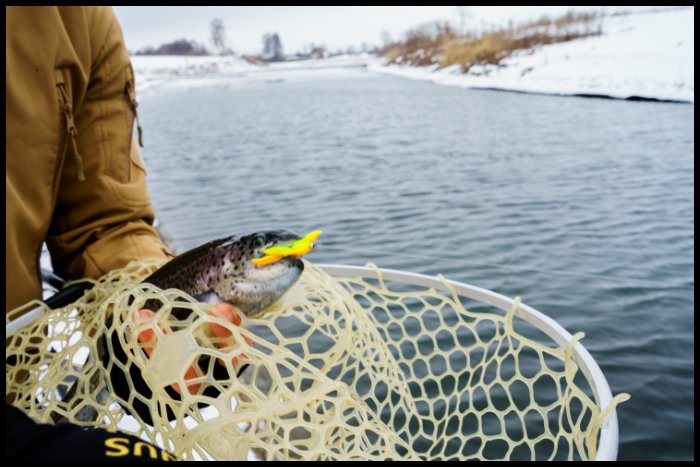
2. Low Temperatures Cause Problems In Trout
Trout are cold-water species; however, extremely low temperatures can negatively impact their physiology and metabolism.
When water temperatures drop below the lower end of their preferred range, trout may become lethargic, reducing their feeding activity and making them less likely to bite.
This is because trout are cold-blooded and rely on their external environment to help regulate their internal temperatures.
Without enough warmth, trout can’t properly digest their food and will have less energy.
3. High Temperatures Cause Stress And Can Be Lethal For Trout
Trout are sensitive to high water temperatures, and prolonged exposure to elevated temperatures can cause significant stress and even mortality.
When water temperatures rise above their preferred range, trout may experience reduced oxygen levels, increased metabolic stress, and decreased feeding activity.
This sensitivity to high temperatures plays a role in stocking levels in many states, as summer weather can be too much for trout to handle.
Once water temperatures start passing 70 degrees Fahrenheit, trout are negatively affected and will begin to die off.
4. Water Temperature Affects Trout Activity Levels
Water temperature plays a crucial role in determining the activity levels of trout.
As the temperature rises within their preferred range, trout become more active, displaying increased feeding behavior and higher energy levels.
Conversely, their activity levels decrease when temperatures are too low or too high.
Changing water temperatures, falling from too high of temperatures, or rising from low temperatures can trigger a massive feeding response from the fish.
This means that fishing during these periods when temperatures become ideal can result in even better fishing if the temperatures have been consistent for several weeks.
5. Trout Food Sources Change Based On Water Temperatures
Water temperature influences the availability and behavior of aquatic insects, which are a primary food source for trout. As the water temperature fluctuates, insects’ hatching and emergence patterns change.
For example, midges and small mayflies may dominate in colder water, while larger mayflies and caddisflies may be more abundant in warmer water.
Understanding these shifts in food sources can help anglers select the appropriate fly patterns or lures to attract trout effectively.
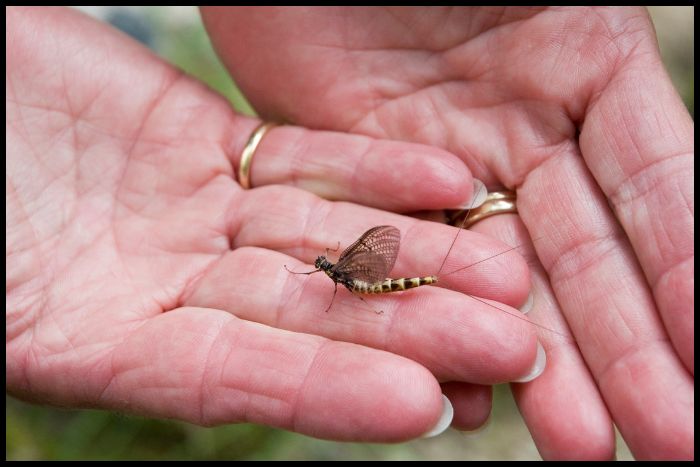
6. Spring Trout Fishing Best Temperature
During spring, trout fishing tends to be most productive when water temperatures range between 50 and 60 degrees Fahrenheit (10 to 15 degrees Celsius).
As the water warms up, trout become more active and start feeding aggressively after the winter months.
They can be found in shallower areas near the shorelines or streams where the water is slightly warmer. Trout will often search the pond/lake/stream for good feeding opportunities.
As temperatures rise in spring, they will stick near flowing water where it is most oxygenated.
7. Summer Trout Fishing Best Temperature
In summer, trout fishing is most successful in cooler water temperatures ranging from 55 to 65 degrees Fahrenheit (12 to 18 degrees Celsius).
As the weather gets warmer, trout seek refuge in deeper pools or move upstream to find cooler water and higher oxygen levels.
Fishing early in the morning or late in the evening when temperatures are lower can increase your chances of catching trout.
My article on the best time of the day to catch trout will help you with more info!
Also, fishing at higher elevations can help combat that higher heat, especially for native trout species.
8. Fall Trout Fishing Best Temperature
During fall, trout fishing is ideal when water temperatures range from 45 to 55 degrees Fahrenheit (7 to 13 degrees Celsius).
As the season progresses and temperatures cool, trout become more active and feed heavily to prepare for winter.
They can be found in deeper pools or near tributaries where food sources are abundant.
Fall trout fishing is one of the most productive times of year to fish thanks to that natural feeding response to bulk up as much as possible before winter weather sets in.
Do check out my other trout fishing tips for beginners to increase your catch rate!
9. Winter Trout Fishing Best Temperature
Winter trout fishing can be challenging due to colder water temperatures. However, trout can still be caught in temperatures ranging from 40 to 50 degrees Fahrenheit (4 to 10 degrees Celsius).
Focus on fishing in slower-moving pools or near spring-fed areas with slightly warmer water.
Fishing with smaller baits or flies that mimic the limited food sources available in winter can be effective. Ice fishing can also be an excellent method if your local body of water suits it.
My take on the best trout fishing baits will help you find some reliable options.
10. Fish Different Water Depths To Find Trout
Trout occupy different water depths depending on the temperature and time of day.
In warmer weather, they may retreat to deeper, cooler pools during the day and move to shallower areas during the early morning and evening to feed.
In cooler weather, trout tend to hold in deeper pools or near the bottom where the water is warmer.
Experimenting with different depths and adjusting your fishing technique to be slower will result in more bites.
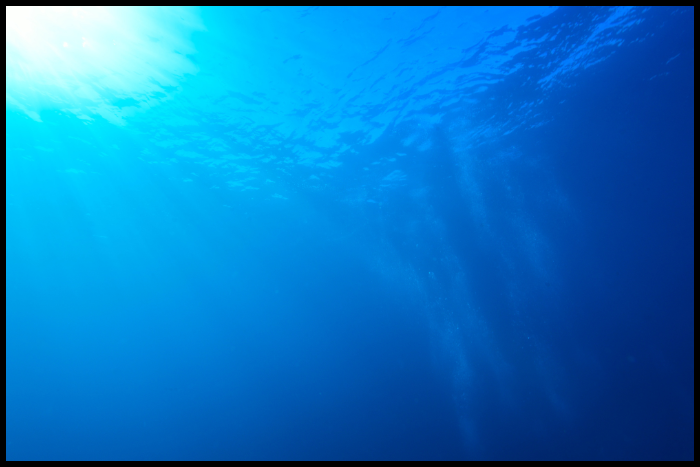
11. Even In Optimal Temperatures, Trout Can Stick To Certain Areas
Despite the favorable temperature range, trout may prefer specific areas within a water body. Food availability, cover, and oxygen levels influence their behavior.
In rivers, trout often gather near riffles or deeper pools with a steady supply of food and shelter.
In lakes, they may inhabit drop-offs, submerged structures, or areas with cooler springs.
Understanding the habitat preferences of trout within their preferred temperature range can help anglers target specific areas and increase their chances of success.
12. Best Temps For Rainbow Trout
Rainbow trout thrive in a temperature range of 55 to 60 degrees Fahrenheit (12 to 15 degrees Celsius). They are more active and feed more aggressively in cooler water.
Anglers often find success targeting rainbow trout during the spring and fall when water temperatures align with their preferred range.
However, rainbow trout can tolerate a wider temperature range and adapt to various conditions, making them more resilient than other trout species.
Rainbow trout are a commonly stocked species and often will be well adapted to local conditions, so check stocking schedules to find the best time to catch them.
I have an article on rainbow trout habitat which dives much deeper into their world.
13. Best Temps For Cutthroat Trout
Cutthroat trout prefer water temperatures between 50 and 57 degrees Fahrenheit (10 to 14 degrees Celsius). They thrive in colder, well-oxygenated streams and are often found in higher elevations.
During warmer months, cutthroat trout may seek refuge in cooler tributaries or deeper sections of rivers and lakes.
Understanding their temperature preferences can guide anglers to suitable locations and increase their chances of catching these beautiful fish.
14. Best Temps For Golden Trout
Golden trout, native to the high-altitude streams of the western United States, thrive in cooler water temperatures ranging from 45 to 55 degrees Fahrenheit (7 to 13 degrees Celsius).
These vibrant fish are often found in alpine lakes and pristine mountain streams.
Anglers seeking golden trout should focus on higher-elevation waters where the temperatures are more conducive to their survival and feeding patterns.
15. Best Temps For Lake Trout
Lake trout, also known as mackinaw or grayling, prefer colder water temperatures ranging from 45 to 55 degrees Fahrenheit (7 to 13 degrees Celsius).
They are deep-dwelling fish commonly found in large, deep lakes.
In summer, lake trout seek out colder, oxygen-rich water by occupying deeper areas or near underwater structures.
Anglers targeting lake trout should focus their efforts in the deeper sections of the lake and adjust their fishing techniques to entice these elusive and powerful fish.
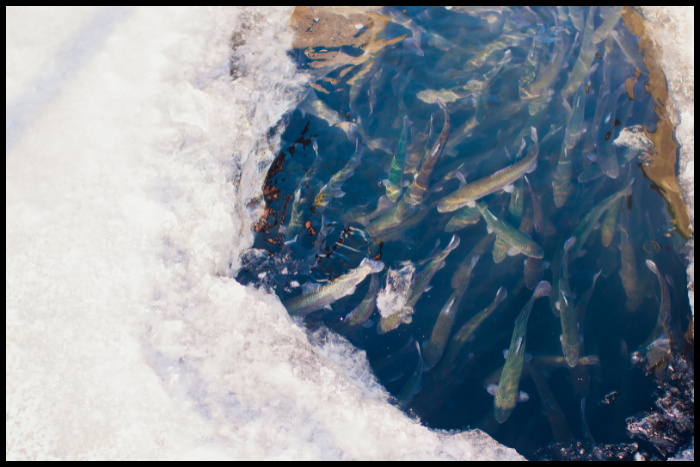
16. Best Temps For Brook Trout
Brook trout, also known as speckled trout or brookies, thrive in cool water temperatures ranging from 50 to 65 degrees Fahrenheit (10 to 18 degrees Celsius).
They prefer well-oxygenated streams and can tolerate slightly warmer temperatures than other trout species.
Brook trout are most active in spring and fall when water temperatures are within their preferred range.
Anglers targeting brook trout should focus on shaded areas, deep pools, and riffles where the water temperature remains cooler even during warmer months.
17. Best Temps For Bull Trout
Bull trout, a native species of North America, prefer cold water temperatures ranging from 40 to 55 degrees Fahrenheit (4 to 13 degrees Celsius).
These large, predatory trout typically inhabit deep, clear rivers and lakes.
Bull trout are susceptible to temperature changes and become less active as temperatures rise.
Anglers targeting bull trout should focus their efforts in colder headwaters, deep pools, and shaded sections of rivers where the water temperature remains within their preferred range.
18. Best Temps For Gila Trout
Gila trout, a rare and protected species in limited areas of the southwestern United States, prefer water temperatures between 50 and 60 degrees Fahrenheit (10 to 15 degrees Celsius).
They inhabit small, high-elevation streams and are well-adapted to the arid environment of their native range.
Gila trout are most active in spring and fall when water temperatures are cooler.
Anglers targeting Gila trout should focus on remote, pristine waters within their limited range and ensure responsible catch-and-release practices to protect this threatened species.
19. Best Temps For Apache Trout
Apache trout, an endangered species native to the streams and lakes of Arizona, thrive in water temperatures between 50 and 65 degrees Fahrenheit (10 to 18 degrees Celsius).
These beautiful trout prefer clear, cold, and well-oxygenated waters. Apache trout are most active in spring and fall when water temperatures align with their preferred range.
Anglers targeting Apache trout should obtain the necessary permits and focus their efforts in designated areas where conservation measures are in place to protect this rare species.
Responsible catch-and-release practices are essential to help conserve and recover Apache trout populations.
The trout population is decreasing and my article on reasons behind trout population decline and how to save it will help you find some useful info!
20. Best Temps For Dolly Varden Trout
Dolly Varden trout, a close relative of the Arctic char, prefer temperatures between 40 and 55 degrees Fahrenheit (4 to 13 degrees Celsius).
These trout are commonly found in cold, clear streams and lakes. Dolly Varden trout are most active in spring and fall when water temperatures are within their preferred range.
Anglers targeting Dolly Varden trout should focus on deep pools, undercut banks, and areas with moderate currents where the water temperature remains cool.
Handling these trout carefully and practicing catch-and-release to conserve their populations is essential.
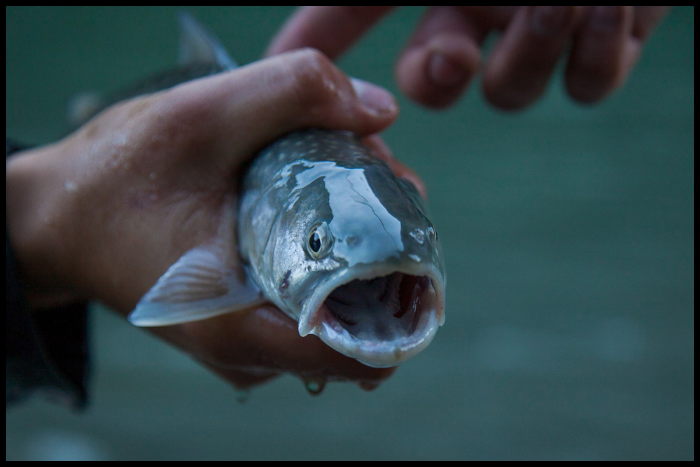
21. Extreme Weather Trout Fishing Safety Tips
Trout fishing during extreme weather conditions requires special precautions.
During hot summer days, when water temperatures rise to stressful levels for trout, it’s best to avoid fishing altogether or target early morning or late evening hours when temperatures are cooler.
In winter, anglers should be prepared for icy conditions, wear appropriate clothing and footwear, and exercise caution near frozen bodies of water.
It’s crucial to check weather forecasts, inform someone about your fishing plans, and carry safety equipment such as a whistle, extra clothing, and emergency supplies when venturing into extreme weather conditions.
22. Spawning Trout And Changing Temperatures
Trout spawning is influenced by changing water temperatures. Each trout species has specific temperature preferences for successful reproduction.
Generally, trout spawn in the fall when water temperatures begin to cool. Female trout create gravel nests called redds, where they deposit their eggs, fertilized by males.
It’s important to avoid disturbing spawning trout and their redds to ensure successful reproduction and population sustainability.
Anglers should be aware of spawning seasons and follow regulations that protect spawning areas to maintain healthy trout populations for future generations.
23. Other Tips In Non-Ideal Temperature Conditions
When fishing for trout in non-ideal conditions, there are a few tips to consider. First, focus on fishing in the early morning or late evening when temperatures are cooler.
Trout are more active during these times. Second, target shaded areas, deep pools, and spring-fed creeks with cooler water temperatures.
Third, adjust your fishing techniques by using smaller, more natural-looking baits or lures.
Trout may be less active and less willing to chase down fast-moving or larger prey in non-ideal temperature conditions.
Check out my recommended setup for trout fishing beginners to help you nail down the gear.
Finally, practice proper catch-and-release techniques to minimize stress on trout during warmer water temperatures.
Wrapping Up
Temperature is one of the most important factors to consider when trout fishing, and how it affects the fish is critical to consider.
Different species also have different preferred ranges, so you can use this to help target specific species and not others.
Preparing for the forecasted temperatures will help you bring the right bait, use the correct presentation, and stay safe.
Being prepared is incredibly important, especially during cold weather, which is potentially dangerous to the angler.
